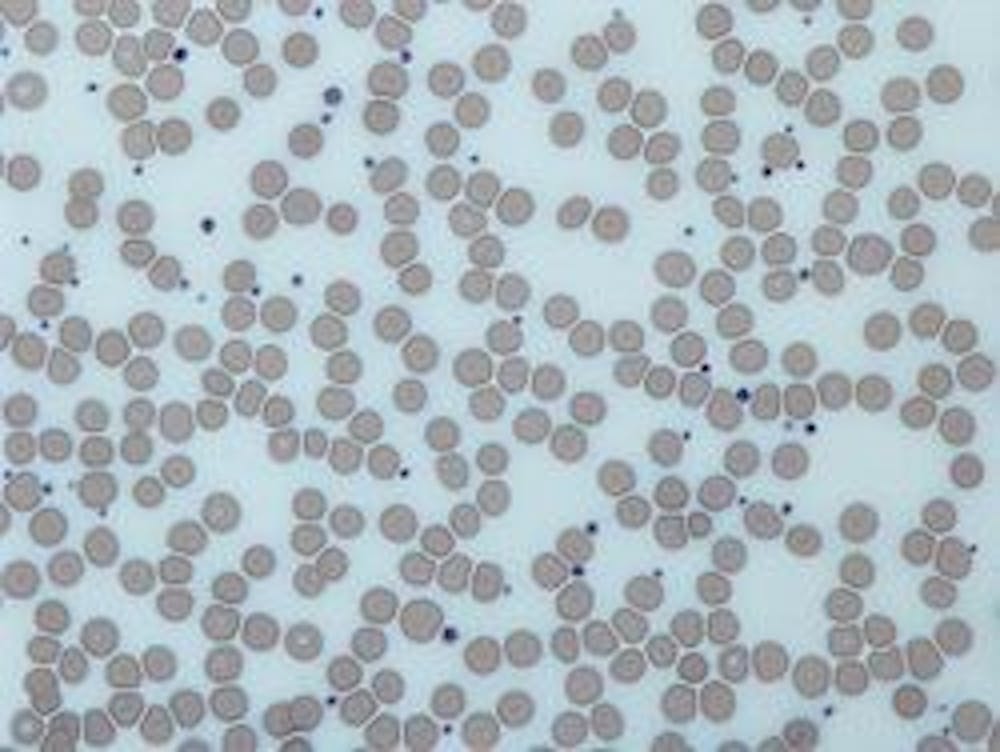Researchers at the Medical School recently published a paper in the “Journal of Clinical Investigation” that may hold future implications for people with platelet deficiencies in their blood, especially newborn and premature babies.
Platelets are blood cells that facilitate clotting when blood vessels are damaged, a process which is necessary for healing injuries. Platelets are formed in the bone marrow by large cells called megakaryocytes. There are two types of megakaryocytes — fetal and adult. Fetal megakaryocytes are small and excellent at reproducing, which is important during human development. Adult megakaryocytes are larger and better at producing platelets.
Progenitor cells, the precursors to megakaryocytes, can become either the fetal or adult type. Transitioning from the production of fetal to adult megakaryocytes creates cells capable of producing enough platelets to properly clot blood.
University researchers identified a gene that works like a switch to control whether progenitors make fetal or adult megakaryocytes.
Pathology Prof. Adam Goldfarb was the principal investigator over the four years it took to complete the project.
“This finding emerged from our long-term interest in molecular pathways that drive megakaryocytic morphogenesis, specifically the intracellular events that cause these cells to undergo massive enlargement as they develop,” Goldfarb said. “We had defined key steps in this process using adult human hematopoietic stem and progenitor cells.”
Megakaryocyte morphogenesis, the transition from progenitors to actual functional megakaryocyte cells, is important in human development. IGF2P3 prevents the activation of a pathway driving adult megakaryocyte morphogenesis, meaning the progenitor cells will become fetal megakaryocytes when they express the gene.
The experiments used to prove the role of IGF2P3 in morphogenesis included a knockdown of the gene, meaning the gene is silenced or repressed from expressing the functional protein. IGF2P3 was also inhibited by other pathways. Both of these experiments caused fetal megakaryocytes to develop like their adult counterparts should.
“We could demonstrate that suppressing expression of IGF2BP3 in infant megakaryocytes caused them to develop like adult cells,” Goldfarb said. “Conversely, forcing expression of IGF2BP3 in adult megakaryocytes caused them to develop like infantile cells.”
This means that IGF2P3 could be the key to controlling whether or not megakaryocyte cells create enough platelets. In the future, research will attempt to determine how to safely access the expression of this gene in patients.
“This is the beginning of a long process that we hope will culminate in a safe, effective treatment,” Goldfarb said. “Realistically, making such a transition takes many years (five-15) and is never guaranteed to succeed.”
Asst. Pathology Prof. Kamal Elagib participated in the experimental design process and conducted most of the experiments for the project. He has stated that some compounds have been found that can inhibit the gene, but they might not be the safest or most effective.
“One future approach that has been advocated by several in the field is to actually treat the megakaryocytes outside the patient and then reinfuse them,” Goldfarb said. “This way, the patient would retain their own age-appropriate cells but would receive a boost from having adult-type cells that could more readily yield platelets.”
One of the possible applications for this discovery is helping babies born prematurely, who often have a condition called thrombocytopenia. According to Mayo Clinic, this condition is caused by low platelet counts and can cause excessive bleeding and dangerous levels of bruising.
Donald Dudley, professor of Maternal-Fetal Medicine, said that such preterm birth is very common.
“Preterm birth occurs in about 10 percent of all pregnancies in the U.S.,” Dudley said. “About a third are due to preterm labor, a third due to preterm premature rupture of the membranes … And a third for other problems like high blood pressure.”
Using the knowledge of the IGF2BP3 gene, future medical innovations may be able to help premature babies produce a healthy amount of platelets.







